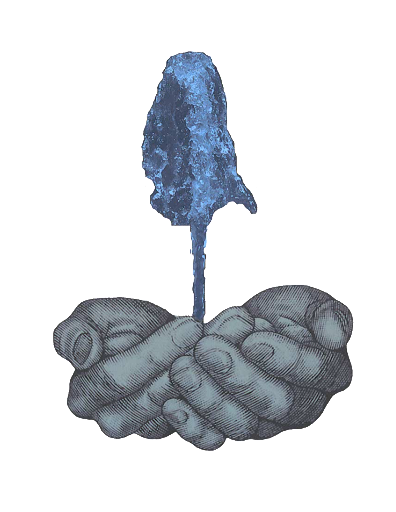Charleston Leaders Announce Plans for Anson Burial Memorial
In October 2022, leaders in Charleston, SC announced that The Anson Burial Memorial will be built near the corner of George and Anson streets to commemorate the 33 bodies of Africans, African Americans and Native Americans disinterred during the 2013 renovation of the Charleston Gaillard Center.
This idea first took shape in 2013 after the unmarked gravesite was initially discovered. In 2017, the late Dr. Ade Ofunniyin, former College of Charleston adjunct anthropology professor and the founder of the Gullah Society, spearheaded efforts to protect and commemorate the site.
For the memorial, artist Stephen Hayes, Jr. said he will cast 36 bronze hands with water flowing out of them above a basin containing soil from this and other unmarked African burial sites on the Charleston peninsula.
The Wells Fargo Foundation, the City of Charleston, the Samuel Freeman Charitable Trust, the Spaulding Paolozzi Foundation, Denny’s and Wolverine Worldwide Foundation have made donations for the memorial.
Read more in the Charleston City Paper from Chelsea Ginstead.
+++++
Anson Street Burial Ground memorial at Charleston Gaillard Center takes shape
A new fountain, located at the corner of Anson and George streets, will soon memorialize 36 people interred between 1760 and 1790 in a small burial ground near what now is the Charleston Gaillard Center.
The memorial fountain will be designed by North Carolina-based artist Stephen L. Hayes Jr. It represents a decades-long effort to protect and honor the remains and the legacies of these 36 enslaved people. Of the 36 people, six were born in Africa; twenty-nine were Black people born in the Lowcountry; and one has Native American ancestry.
The memorial fountain will include 36 pairs of hands cast in bronze around the rim of a concrete basin formed by creating a bowl-shaped depression in the soil near the Anson Street burial ground. A jet of water will project from each pair of hands. To cast the hands, they will use the hands of people from the community. According to Hayes, “The hands will help humanize the monument as well as reference the labor enslaved people were forced to endure — labor that often involved rice fields and flowing water.”
Soil from each of the known and accessible African-descendant burial grounds in Charleston will be incorporated into the memorial. The soil will symbolize the toil of enslaved and free Africans who were eventually buried in the earth upon which the city was built.
Brenda Lauderback, chairwoman of the board of Spartanburg-based Denny’s Corp., and Nigel Redden, former general director of Spoleto Festival USA are leading the effort. There are several other key partners in this collaborative project, including the Anson Street African Burial Ground Project, the city of Charleston, the Gaillard Center, the Gullah Geechee Cultural Heritage Corridor, St. John’s Reformed Episcopal Church, the College of Charleston, the Gibbes Museum, the Association for the Study of African American Life and History, and the Preservation Society of Charleston.
Read more in The Post and Courier from Adam Parker.
+++++
Hands pointing upward will rim memorial fountain
The Anson Street Memorial Committee selected 36 Charleston-area residents to serve as hand models for the Anson Burial Memorial fountain. The fountain will sit near George and Anson streets where the remains of 36 Africans, African Americans, and a Native American were uncovered during the 2013 renovation of the Charleston Gaillard Center.
The fountain will rest in a bowl-shaped depression in the ground near the site where the remains were found, and water will spray from each pair of hands. Artist Stephen Hayes, Jr. has been working to prepare hand castings of the models’ hands that will be used to produce the bronze castings for the fountain.
Read more in the Charleston City Paper from Herb Frazier.
+++++
‘Hands tell a certain story’: Charleston’s African Burial Memorial slowly coming to life
The Anson African Burial Memorial, which seeks to honor the remains of the 36 deceased who were uncovered during the renovation of the Charleston Gaillard Center in 2013, is slowly coming to life.
The memorial project has received large donations from Denny’s and Wells Fargo. Several key partners are also involved in the memorial efforts, including Anson Street African Burial Ground Project, the Gaillard Center, the Gibbes Museum, the city of Charleston and others.
The sculpture will include 36 pairs of hands cast in bronze circling the top of a bowl that will be created by forming a depression in the ground. Water will project from each pair of hands.
Thirty-six Charleston-area residents were selected to serve as hand models for the sculpture. They were chosen based on an effort to align the participants as closely as possible with the ages of the 36 ancestors. The oldest volunteer was a 91-year-old Charleston-area resident, while the youngest volunteer was a 5-year-old named Melendia Dinwiddie. She represents the youngest of the deceased, who was a 6-month-old infant. It was important for Dinwiddie’s parents to allow their daughter to participate in this project.
When the 36 castings are complete, they will be smoothed out and taken to a facility to be covered in bronze before they are attached to the fountain, which will sit inside a miniature park along George Street.
Read more in The Post and Courier from Rickey Ciapha Dennis Jr.
“A promise fulfilled”
— Mayor John Tecklenburg, Charleston
A Memorial for 36 Ancestors buried between 1750 and 1780 on Anson Street in what is now downtown Charleston and for all the enslaved Africans/African Americans buried in Charleston in unmarked graves before 1865.



